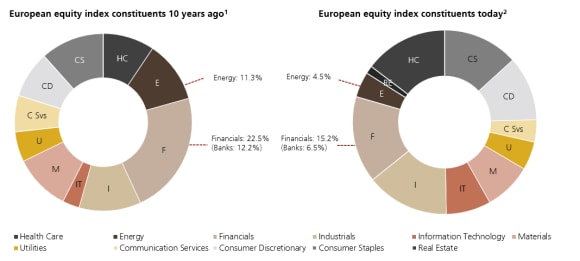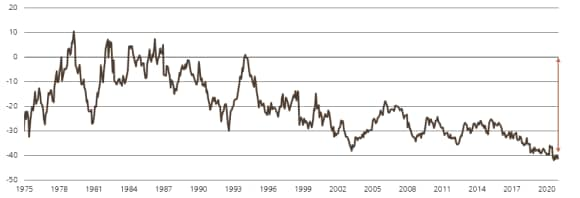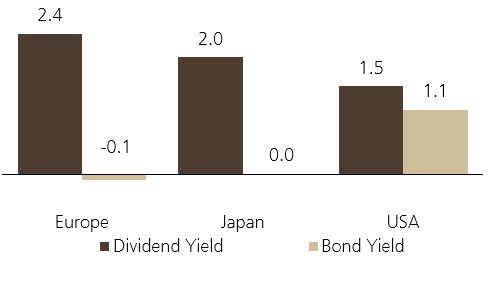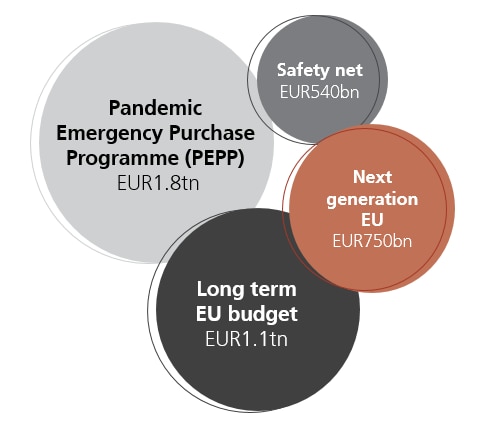Conversations with Max Anderl
In this edition of PM Corner, we sat down with Max Anderl, Head of Concentrated Alpha, to discuss why now is the right time to buy European equities.
"Underweight European equities" has been one of the most crowded cross-asset trades for years, but the tide is turning. With relatively attractive valuations and tailwinds from economic stimulus, we see plenty of catch-up potential, especially as we head into a recovery this year.
1. European equities have underperformed globally in the past. Why do you expect this to change?
1. European equities have underperformed globally in the past. Why do you expect this to change?
European equities have underperformed globally in the past mainly due to the weak performance of sectors such as banks and energy. But the common belief that the European market is synonymous with these sectors is no longer true.
Instead, the total weight of banking and energy stocks in the index fell by nearly half over the last 10 years. In contrast, the sectors that have grown the most are health care, IT, industrials and consumer discretionary, which together make up nearly half of the index today. This improving mix of sector composition offers investors a much better choice of growing, quality companies. It is a much healthier index composition.

Maximilian Anderl is Head of Concentrated Alpha Equity and is the lead portfolio manager for the Global and European Concentrated Alpha long only and long / short strategies.

2. Are European equities attractively valued?
2. Are European equities attractively valued?
While the above should justify a higher valuation for European equities, they still trade at a discount relative to other developed markets, such as the US. As shown below, the valuation gap between European and US equities has widened significantly over the years. Investors should regard this as an attractive entry point into an asset class that is well positioned to benefit from the economic recovery given its more cyclical nature and improving Brexit headwinds.
Europe vs USA (average % premium on P/E, P/BV & P/Div)

3. How do European equities compare versus bonds in this low interest rate environment?
3. How do European equities compare versus bonds in this low interest rate environment?
With interest rates likely to stay lower for longer, cash and high grade bonds are likely to provide negative real returns for the foreseeable future. On the other hand, companies with a long track record of paying a secure and sustainable dividend are more likely to maintain their dividends.
Equities look more attractive than bonds especially when comparing dividend yields against government bond yields. Furthermore, the European dividend yield enjoys greater support than dividend yields in other regions.
Regional dividend and bond yields (%)

4. Many countries have launched stimulus programs to help their economies recover from COVID-19 impacts. Why is it a big deal for Europe?
4. Many countries have launched stimulus programs to help their economies recover from COVID-19 impacts. Why is it a big deal for Europe?
The financial firepower we have seen from the EU has been substantial. More importantly, however, is that this is a combined effort by all member states and the reforms are targeted at rebuilding the European economy over the long term. This should not only deepen fiscal and institutional integration within the bloc, but also improve investor confidence and lower risk premia across European assets.

- Extension of temporary asset purchasing programme, PEPP, until the end of March 2022.
- A more flexible long-term budget with the capacity to address unforeseen needs of the future.
- COVID-19 safety nets in place for workers, businesses and member states.
- NextGenerationEU to help repair immediate economic and social damage driven by the pandemic.
- World's largest green stimulus package at 30% of budget to tackle climate change.
- Modernization efforts through research and innovation, climate and digital transitions.
5. What role does Europe play in the move toward a more sustainable future?
5. What role does Europe play in the move toward a more sustainable future?
We think that Europe in general is ahead of its peers in terms of sustainability. Governance has been deeply ingrained into most European companies for many decades while more recently COVID-19 has shone light on the importance of "S" in ESG.
On the environmental front, the EU has pledged to achieve carbon neutrality by 2050. With the US rejoining the Paris Agreement and large players like Japan, Korea and China also pledging carbon neutrality, these coordinated efforts should spill-over to international markets especially ones that are more sensitive to global economic growth, such as Europe.
For investors looking for portfolios of best ideas in Europe, the Concentrated Alpha Equity team offers a range of ESG integrated or Sustainable focused funds with competitive track records. By combining material sustainability data with our fundamental understanding of companies, we aim to make better-informed investment decisions for our clients.
